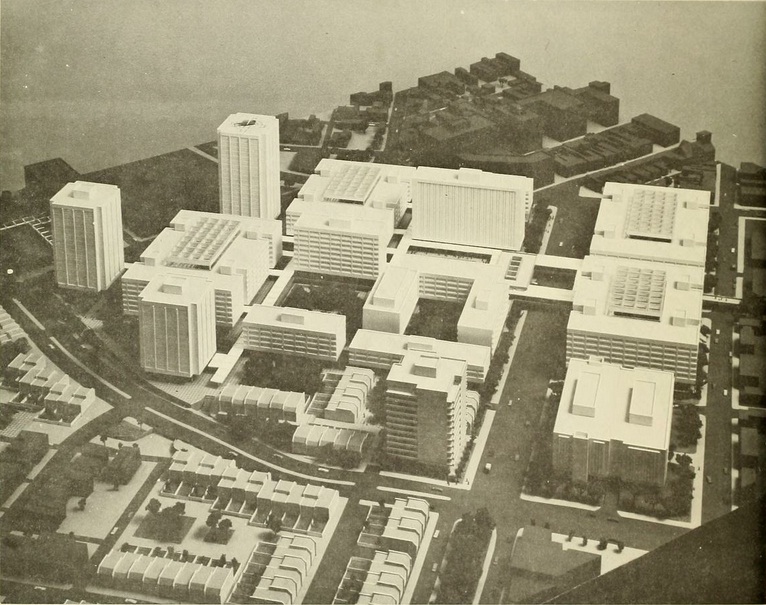
Over the last few years working as preservationist in Baltimore City, I’ve been confronted with the enduring presence of built history of post-WWII urban renewal. Even beyond such clear landmarks as 1950s Charles Center or the 1970s “Highway to Nowhere,” much of the area in and around downtown Baltimore is indelibly marked by parks, parking lots, apartment towers and vacant houses that can be directly linked the broader mess of politics and policies that we remember as urban renewal. Over the next couple of months, I’m hoping to push beyond my still somewhat muddled understanding of this issue to write up a more comprehensive narrative of post-WWII urban renewal efforts in Baltimore.
My excuse for this new effort is a recent idea to organize a bike tour of urban renewal sites in downtown and west Baltimore mapped out here. Accordingly, this project may have a second life for Baltimore Heritage but, for the time being, I’m undertaking this as a personal and independent research effort. The topic feels even more urgent considering the proposal to demolish Baltimore’s Mechanic Theater - a Brutalist 1967 theater built as part of the Charles Center complex. Despite the challenges posed by the Mechanic (and other buildings like it) to sustainability and urban design, I still hold what I might call a Fuck Yeah Brutalism attitude – the belief that the buildings and landscapes of the 1950s, 60s and 70s (and the stories of behind them) make up an important legacy in the social and built history of our region that should be recognized and interpreted, not ignored and demolished.
So this is No. 1 in a new series on urban renewal histories in Baltimore. I’m hoping to make this a weekly endeavor so look out for more soon.
Reuse
Citation
@online{pousson2012,
author = {Pousson, Eli},
title = {Notes on {Urban} {Renewal} in {Baltimore} - {No.} 1},
date = {2012-06-03},
url = {https://elipousson.github.io/posts/2012-06-03-notes-on-urban-renewal-in-baltimore-no-1},
langid = {en}
}